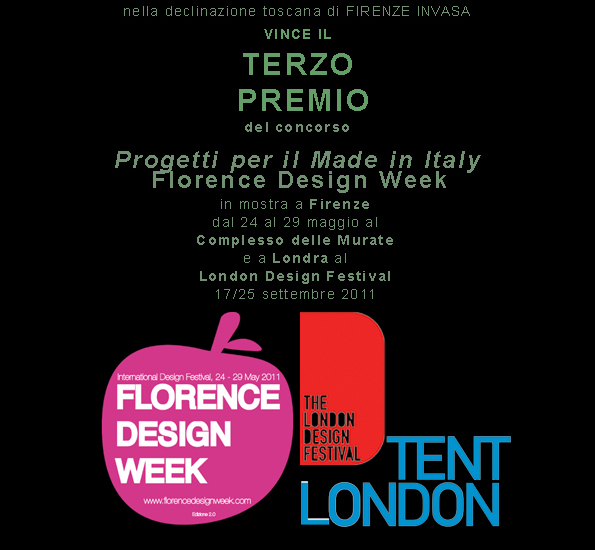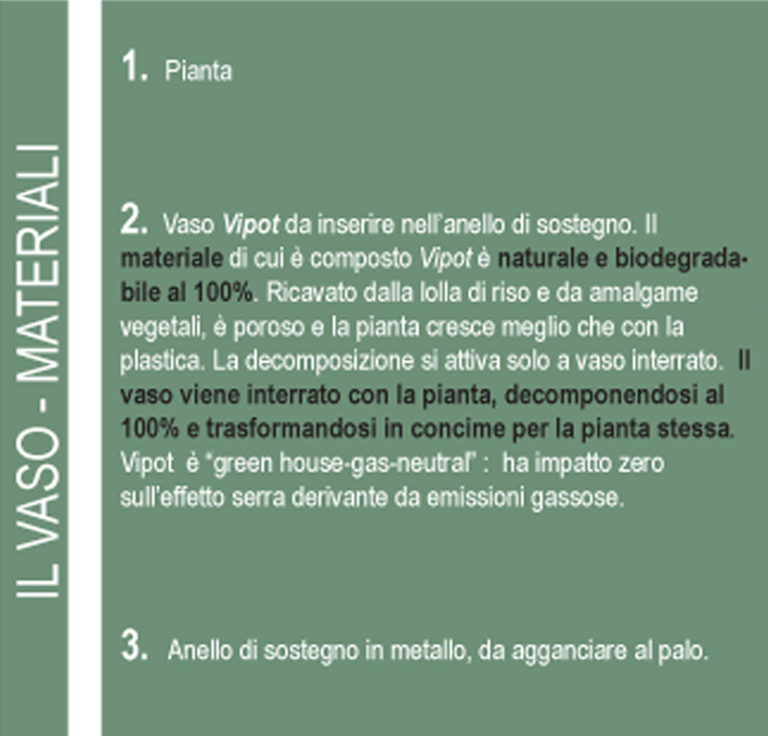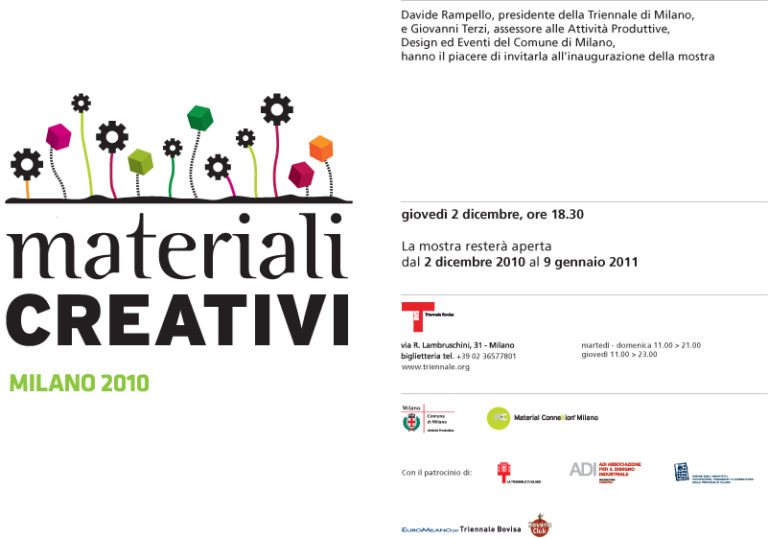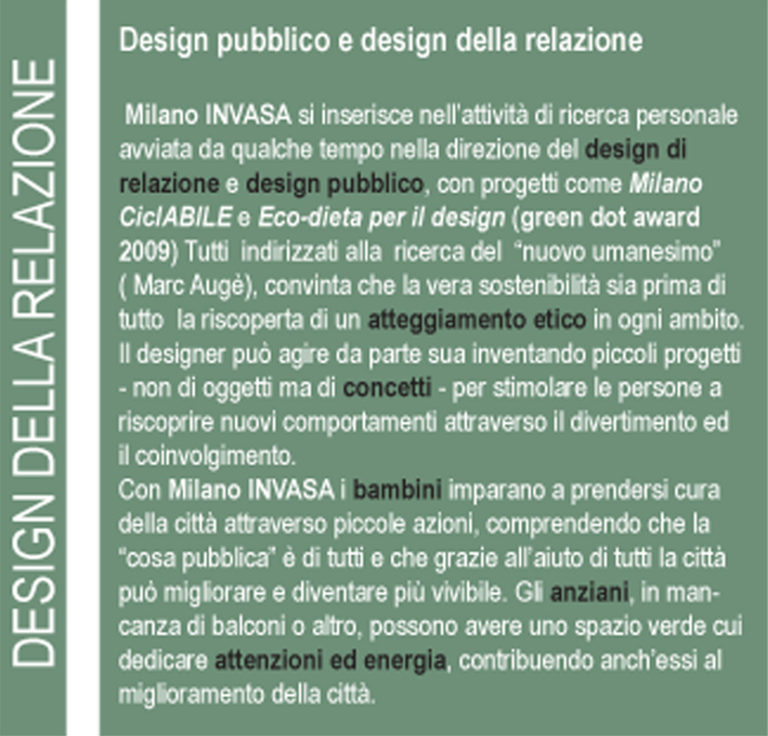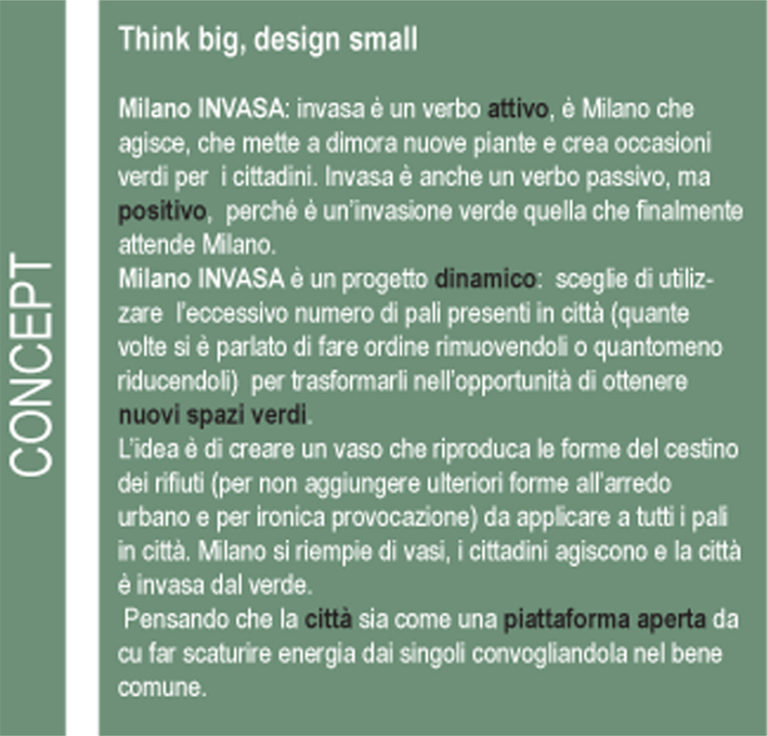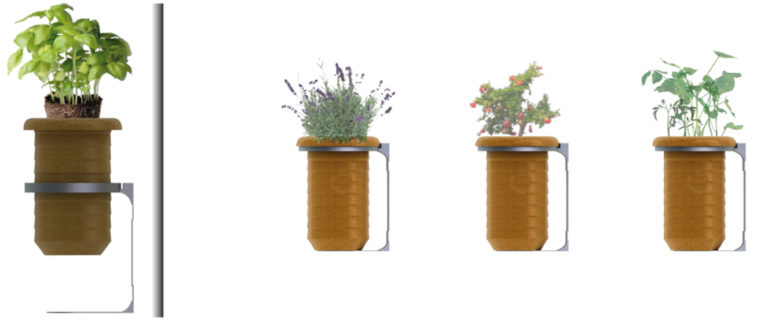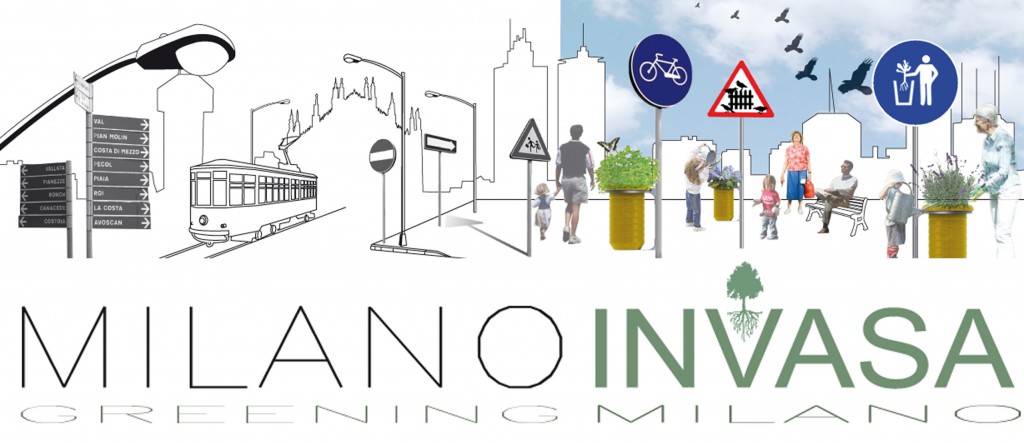
MILANO INVASA
Think big, design small
Design pubblico e design della relazione.
Milano INVASA si inserisce nell’attività di ricerca personale avviata da qualche tempo nella direzione del design di relazione e design pubblico, con progetti come Milano CiclABILE e Eco-dieta per il design (green dot award 2009) Tutti indirizzati alla ricerca del “nuovo umanesimo”(Marc Augè), convinta che la vera sostenibilità sia prima di tutto la riscoperta di un atteggiamento etico in ogni ambito. Il designer può agire da parte sua inventando piccoli progetti – non di oggetti ma di concetti – per stimolare le persone a riscoprire nuovi comportamenti attraverso il divertimento ed il coinvolgimento.
Con Milano INVASA i bambini imparano a prendersi cura della città attraverso piccole azioni, comprendendo che la “cosa pubblica” è di tutti e che grazie all’aiuto di tutti la città può migliorare e diventare più vivibile. Gli anziani, in mancanza di balconi o altro, possono avere uno spazio verde cui dedicare attenzioni ed energia, contribuendo anch’essi al miglioramento della città. Think big, design small
Milano INVASA: invasa è un verbo attivo, è Milano che agisce, che mette a dimora nuove piante e crea occasioni verdi per i cittadini. Invasa è anche un verbo passivo, ma positivo, perché è un’invasione verde quella che finalmente attende Milano.
Milano INVASA è un progetto dinamico: sceglie di utilizzare l’eccessivo numero di pali presenti in città (quante volte si è parlato di fare ordine rimuovendoli o quantomeno riducendoli) per trasformarli nell’opportunità di ottenere nuovi spazi verdi.
L’idea è di creare un vaso che riproduca le forme del cestino dei rifiuti (per non aggiungere ulteriori forme all’arredo urbano e per ironica provocazione) da applicare a tutti i pali in città. Milano si riempie di vasi, i cittadini agiscono e la città è invasa dal verde.
Pensando che la città sia come una piattaforma aperta da cu far scaturire energia dai singoli convogliandola nel bene comune.
Think big, design small
Milan INVASA is part of my personal research activity started in the far 2006 in the direction of relation design and public design, with projects such as Milano CiclABILE and Eco-diet for design (green dot award 2008 and 2009). All aimed at the search for the “new humanism”(Marcè Augè), convinced that true sustainability is first and foremost the rediscovery of an ethical attitude in every area.
The designer can act on his part by inventing small projects – not objects but concepts – to stimulate people to rediscover new behaviors through fun and involvement.
With Milano INVASA children learn to take care of the city through small actions, understanding that public space belongs to all of us and that thanks to the help of everyone the city can improve and become more livable.
The elderly, in the absence of balconies or other, can have a green space to devote attention and energy, also contributing to the improvement of the city. Think big, design small.
Milan INVASA: playing with words in Italian, it is an active verb (meaning “to pot palnts), it is Milan that acts, that plants new plants and creates green opportunities for citizens. Invaded is also a passive verb (meaning invaded, overrun) , but positive, because it is a green invasion that finally awaits Milan.
Milano INVASA is a dynamic project: it chooses to use the excessive number of poles present in the city (how many times there has been talk of tidying them up or at least reducing them) to turn them into the opportunity to obtain new green spaces.
The idea is to design a vase that reproduces the shapes of the city waste bin (not to add additional forms to the urban furniture and ironically provocative) to be applied to all the poles in the city. Milan to stimulate people to rediscover new behaviors through fun and involvement. Milano is then filled with pots, citizen act and the city is invaded by the green.
Thinking to the city like an open platform able to bring energy from the individual by channeling it into the common good.
- Address
Via Magolfa 13, Milano 20143 - Contacts
tel : +39 02 89400548
fax : +39 02 89400548
mail : info@nisivoccia-architettura.com
© 2014-2025
Carolina Nisivoccia Architetto |
p.iva 12472630156
Web Design: Teo Sandigliano
Web Programming: Giorgio Martinetto

